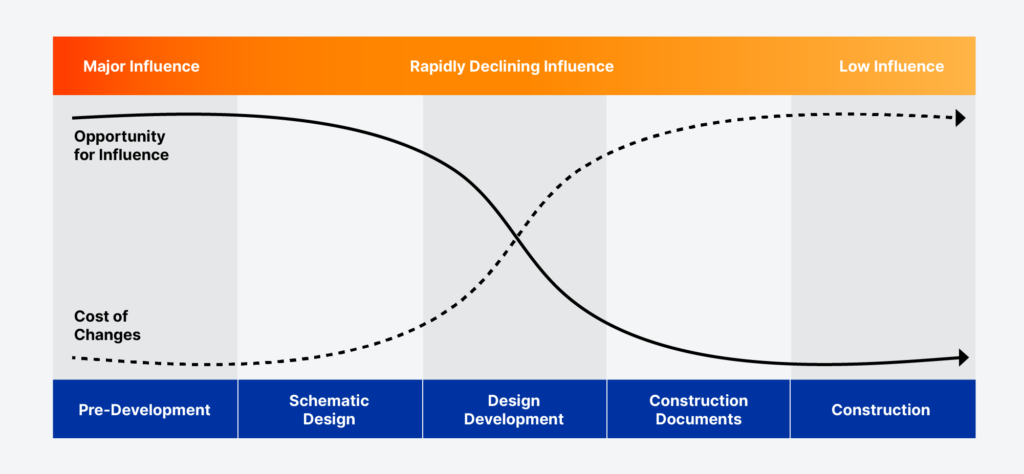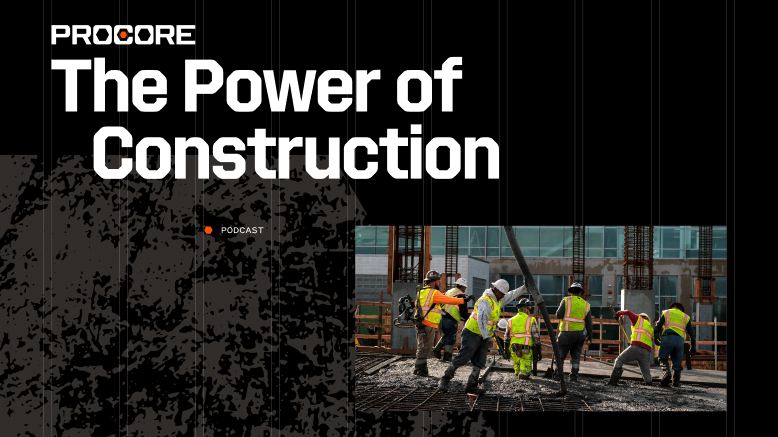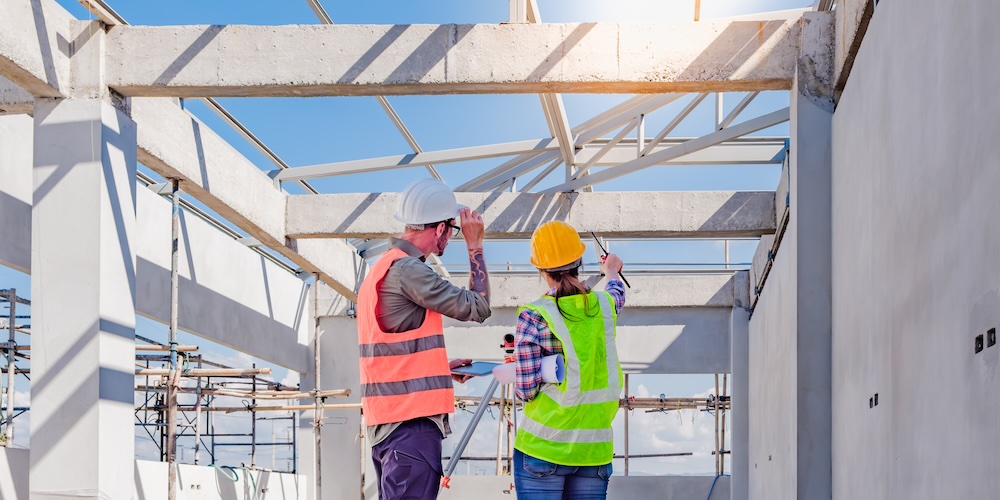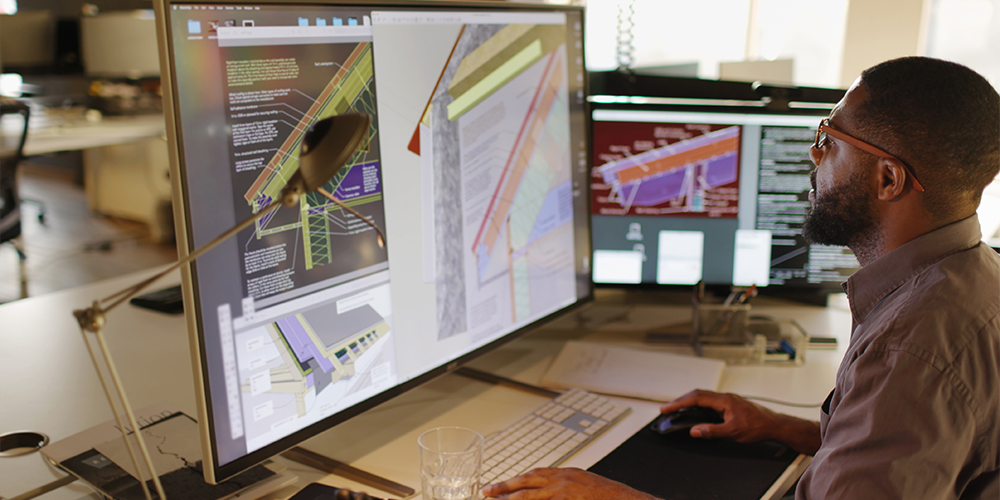— 9 min read
Constructability Reviews: Moving From Design to Reality
Last Updated Oct 16, 2024
Makenna Ryan
Civil & Infrastructure Solutions Engineer
Makenna Ryan is a Solutions Engineer at Procore. Prior to joining Procore, he spent seven years at McDermott International Inc. as a construction Manager and Senior Equipment Engineer. He also spent three years as a Project Engineer at Subsea7. Makenna received his B.S. in Mechanical Engineering and Technology from Texas Tech University. He is based in the Houston area.
Trey Strange
Contributing Writer
27 articles
Trey Strange is a Peabody and Emmy-Award winning writer and producer based in Brooklyn, NY. Throughout his career, Trey has worked for the Huffington Post, Houston Chronicle, Out Magazine, Brooklyn Eagle, CNBC, INTO, and New York Magazine's Bedford + Bowery. He received his Masters in Journalism and Middle East studies from New York University, and Bachelors in the same subjects from the University of Houston.
Last Updated Oct 16, 2024

Before concrete is poured or hammers are swung, a construction project requires the proper scrutiny to determine if the project is even possible. This is where a constructability review comes in. It's a step in the preconstruction process that brings together designers, project managers and construction teams to make sure the project is feasible and practical from the start.
Constructability is an assessment of whether a project can be built efficiently, affordably and safely. A constructability review is a structured meeting to discuss and address any potential issues before construction begins.
This article explores the importance of timing these reviews correctly, the key players involved, how effective communication can make or break the process and gives examples of how constructability reviews can make a difference in terms of cost.
Table of contents
Timing and Process of Constructability Reviews
Timing is important for constructability reviews because it helps catch potential problems early, saving time and money later on.
Pro Tip
A constructability review is always better in person, if possible. In-person meetings facilitate smoother communication and allow us to pick up on non-verbal cues like body language and facial expressions. Communication flows more smoothly when we're all in the same room, and we can solve problems faster.
The process for leading a constructability review can vary, depending on team experience and the project’s design complexity. Some reviews might take all day, while others might be much shorter meetings.
It's often best to conduct these reviews early in the design process — in the sweet spot just after the initial concept phase, when the team is deciding on the broader strokes of the project’s design, and just before the bid proposal. This makes sure there's enough detail to review but still allows for changes.
Regular reviews might be needed throughout the project to address new issues as they arise. These reviews should include all relevant stakeholders and be carefully planned to make the most of everyone's time.
Involving Stakeholders in Constructability Reviews
For larger or more complex projects, it can be beneficial to bring in experienced external contractors to conduct a constructability review.
Sometimes, companies will pay contractors for their time to participate in the review. They might request that the contractor also bring in senior on-site managers to assess the design and identify potential issues or improvements.
A lot of times, when a contractor is asked to participate in a project’s constructability review, they’re going to do it without charging a fee, because it gives them an opportunity to get involved early. By participating in the design review, they can influence the design to make it more favorable or easier for them to execute, and they’ll have a better understanding of it if they end up bidding on it later.
Makenna Ryan
Civil & Infrastructure Solutions Engineer
Procore
Beyond external contractors, a constructability review generally includes the following stakeholders:
| Stakeholder | Role in Constructability Review |
|---|---|
| Design Team | Architects, engineers and designers who present and explain the project plans. |
| Project Manager (PM) | Oversees the entire project, coordinates the review and ensures alignment with project goals. |
| Construction Team | Field operations managers, superintendents and other personnel who provide practical feedback. |
| Owners/Clients and Reps | Individuals or organizations funding the project, who make sure it meets their requirements. |
| General Contractors (GC) and Subcontractors | Companies and specialists who will execute the construction work and contribute expertise. |
The Importance of Communication in Constructability Reviews
To keep all parties on the same page, you must communicate well. When designers, project managers and construction teams can openly discuss their ideas and concerns, it helps to identify and solve potential problems early.
Effective communication also promotes good teamwork by building trust. This allows people to ask questions and share their thoughts without fear of criticism. When everyone feels comfortable speaking up, the team can work together more effectively to create a better, more buildable design.
Poor communication, on the other hand, can lead to misunderstandings and conflicts. If team members don’t feel heard or respected, it can result in unaddressed issues that may cause delays or increase costs later in the project. To lay the groundwork for a successful review, create an environment of open and respectful dialogue.
Once, I worked on a project where we had to build a special loading table that could tuck away and then swing out over water, but the design was tricky because of space constraints and the need for a certain reach. As a result, the design ended up being heavy and hard to move, looking awkward and out of place. The construction team didn’t understand why it had to be so heavy and started criticizing it harshly, which shut down communication and made it difficult for my designer.
To resolve it, we had to explain all the constraints and rules that led to these design decisions. It was challenging, but by clarifying everything, we managed to build a better team for the next project. We created a meaningful constructability review where everyone could openly discuss and ask questions. That's what constructability is all about—finding something that somebody else didn't see to say, "Would it be cooler or smarter or better if we did this? Would it go in faster? Would it be lighter? Could we pick it up differently or use a smaller crane?" And then the project is better for it, because you’ve had that conversation.
Makenna Ryan
Civil & Infrastructure Solutions Engineer
Procore
Team Composition and Expertise
Pro Tip
Bring a small team—only as many as absolutely necessary. If the team gets too big, the review can turn into a kind of slush of ideas, with no true, clean outcome. Develop a narrow scope of conversation, breaking it up by disciplines.
A constructability review is all about aligning a design plan with the team that will be carrying it out on the ground.
As such, having as much real-world experience in the room as possible can be key for a good review process. Including senior superintendents can be useful for spotting issues others might miss, and making sure the review is realistic and practical.
But it's also important to keep the team small and focused. Too many people can make the meeting chaotic and less productive. Each person should have a clear role and bring specific expertise. A smaller group helps keep the discussion on track and leads to better results.
Conducting Reviews Using Digital Tools
Digital tools like 3D modeling and animations are great for constructability reviews because they help the whole team visualize the project, even before it’s broken ground. These tools can show detailed images and movements, making it easy to understand how different scopes of work fit together.
However, not everyone knows how to use these digital tools yet, which makes them challenges to implement on a large scale. Still, with some training, project leadership can harness BIM software and 3D modeling programs to envision the completed structure pre-build.
The more detail you can get early on with these visuals, the more ahead you can get of the work and any problems you might run into. It’s not just useful for design or constructability—being able to model and assess the environment you’ll have to navigate is huge, because it gives you a full picture of what it takes to bring this thing to life."
Construction management software also helps simplify the process after the review—making tasks easy to track, and simple to verify when they’ve been executed as planned.
In addition to maintaining accountability across the larger organization, software programs help keep projects on track by providing a robust system for tracking, documenting and managing all aspects and documents needed in the constructability review process.
Makenna Ryan
Civil & Infrastructure Solutions Engineer
Procore
Cost and Efficiency Benefits of Constructability Reviews
The main way a constructability review affects the bottom line is that it helps find problems in the drawings early in the design phase, so fewer changes are needed during construction.
When there are fewer changes, a project runs more smoothly, and less rework is needed. This also makes it easier to predict costs.
We were working on the design for a new piece of equipment that was supposed to be installed on a ship. During the design and engineering phase, we were focused on getting all the technical details right.
But it turned out our ship wasn’t big enough to carry the equipment or the load. And so we went back and re-engineered it and found a more efficient way to do the same thing with a different piece of equipment that was smaller and more compact. And by doing that, we not only avoided damaging our ship, but we also saved a significant amount of money and time. Had we gone forward with the original plan, we would have faced significant costs, delays and potential damage to the ship. That's a real-world example of how catching these kinds of issues early can lead to massive savings and a smoother project overall.
Makenna Ryan
Civil & Infrastructure Solutions Engineer
Procore

Preparing for a Constructability Review
Good preparation helps to avoid last-minute changes, which can be expensive and disruptive. The more time and effort a GC puts into preparation, the fewer surprises they'll encounter down the line. Taking the time upfront to really dig into the design can help the whole team understand all its potential pitfalls.
In addition, everyone needs to understand their specific role and responsibilities. When each team member knows what they are supposed to do, it creates accountability, making it easier to hold people responsible for their parts. Clear roles and responsibilities also improve communication, as everyone knows who to go to for specific issues.
Stay updated on what’s happening in construction.
Subscribe to Blueprint, Procore’s free construction newsletter, to get content from industry experts delivered straight to your inbox.

The Confidence Boost of a Thorough Review
A well-executed constructability review can have a significant impact on the success of a project, aligning the design with real-world execution and creating collaboration among all stakeholders. As a necessary part of the planning and design phase of construction, these meetings serve to make sure a plan is as practical, efficient and cost-effective as it is idealistic and visionary.
When done correctly, a constructability review makes the whole team feel more confident about what they need to do — and promote a culture of communication across an organization.
Just as importantly, these reviews help catch potential issues early, saving time and money and keeping a project moving smoothly out of preconstruction and toward the building phase.
Was this article helpful?
Thank you for your submission.
100%
0%
You voted that this article was . Was this a mistake? If so, change your vote here.
Scroll less, learn more about construction.
Subscribe to The Blueprint, Procore’s construction newsletter, to get content from industry experts delivered straight to your inbox.
By clicking this button, you agree to our Privacy Notice and Terms of Service.
Thank you!
You’re signed up to receive The Blueprint newsletter from Procore. You can unsubscribe at any time.
Categories:
Written by
Makenna Ryan
Civil & Infrastructure Solutions Engineer | Procore
Makenna Ryan is a Solutions Engineer at Procore. Prior to joining Procore, he spent seven years at McDermott International Inc. as a construction Manager and Senior Equipment Engineer. He also spent three years as a Project Engineer at Subsea7. Makenna received his B.S. in Mechanical Engineering and Technology from Texas Tech University. He is based in the Houston area.
View profileTrey Strange
Contributing Writer
27 articles
Trey Strange is a Peabody and Emmy-Award winning writer and producer based in Brooklyn, NY. Throughout his career, Trey has worked for the Huffington Post, Houston Chronicle, Out Magazine, Brooklyn Eagle, CNBC, INTO, and New York Magazine's Bedford + Bowery. He received his Masters in Journalism and Middle East studies from New York University, and Bachelors in the same subjects from the University of Houston.
View profileExplore more helpful resources

What Happens When Data Drives the Business?
Construction has long been seen as a low-margin industry. But what if the real problem isn’t the margins—it’s how decisions get made? In episode 17 of The Power of Construction,...

Preconstruction Partnerships: How Safety Pros Can Collaborate with Estimating & Proposal Teams
Construction leaders and safety professionals are developing a strong understanding of how safety programs positively impact project outcomes. When safety is woven into every aspect of operations from pre-construction to...

Types of Construction Specifications: Understanding the Difference
On a construction project, the specification book, often referred to as the “spec book,” typically contains detailed descriptions of the materials, products, systems and workmanship required. The design team —...

Virtual Design and Construction: Technology for Building the Future
Technology is transforming industries from the medical field to the world of entertainment. And construction — although a historically slow industry to adopt change — is no exception. Today, there’s...
Free Tools
Calculators
Use our calculators to estimate the cost of construction materials for your next project.
Templates
Find a template to help you with your construction project tasks.
Material Price Tracker
Get the latest U.S. retail prices and view historical trends for common building materials.
Glossary
Explore key terms and phrases used in the industry.
